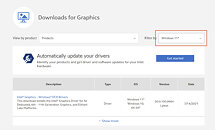First VESA DisplayPort 2.0 Video Source and Sink Devices Complete DisplayPort UHBR Certification
The Video Electronics Standards Association (VESA ) today announced that the first video source and display devices supporting DisplayPort UHBR (Ultra-high Bit Rate) - the higher data link rates supported by the DisplayPort standard version 2.0 - have completed certification through the DisplayPort UHBR Certification Program. To achieve this important milestone, UHBR chipset reference source and display designs provided by AMD, MediaTek and Realtek successfully met the PHY, link and interoperability testing requirements outlined in the DisplayPort 2.0 Compliance Test Specification (CTS). The higher bandwidths enabled by UHBR support a variety of use cases such as uncompressed 8K 60 Hz HDR, 4K 240 Hz HDR, two 4K 120 Hz HDR or four 4K 60 Hz HDR displays through a single cable.
VESA also announced today that qualified VESA DisplayPort Authorized Test Centers (ATCs) are ready to begin testing and certification of UHBR end-products using approved test equipment and reference sink and source devices for interoperability testing. An engineering demonstration of a reference source and sink device setup from AMD and MediaTek operating at UHBR link rates will be showcased at the Display Week Symposium and Exhibition in San Jose, Calif., on May 10-12, 2022 at VESA booth #214 at the San Jose Convention Center.
VESA also announced today that qualified VESA DisplayPort Authorized Test Centers (ATCs) are ready to begin testing and certification of UHBR end-products using approved test equipment and reference sink and source devices for interoperability testing. An engineering demonstration of a reference source and sink device setup from AMD and MediaTek operating at UHBR link rates will be showcased at the Display Week Symposium and Exhibition in San Jose, Calif., on May 10-12, 2022 at VESA booth #214 at the San Jose Convention Center.


































































